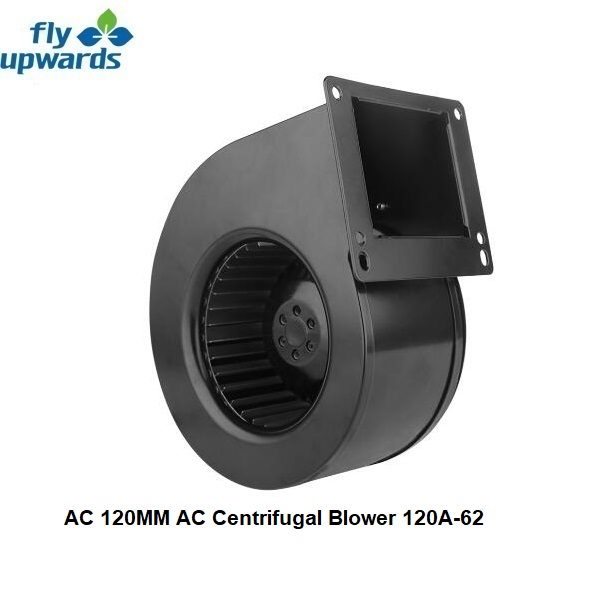Primary Applications of an AC Forward Curved Fan in HVAC Systems
2024-05-21
When it comes to HVAC (Heating, Ventilation, and Air Conditioning) systems, the choice of fan is critical for ensuring efficient air movement and optimal performance. Among the various types of fans used, the AC forward curved fan stands out for its unique design and versatility. Let's dive into the primary applications of an AC forward curved fan in HVAC systems and understand why it's a preferred choice for many applications.
Understanding AC Forward Curved Fans
Before exploring their applications, it’s essential to understand what makes forward curved fans unique. These fans, also known as centrifugal fans, have blades that curve in the direction of the fan’s rotation. This design allows for high airflow rates at relatively low pressures, making them ideal for specific HVAC applications. They are typically used in AC (alternating current) systems and are known for their quiet operation and efficiency.
Primary Applications in HVAC Systems
1. Residential Heating and Cooling
One of the most common applications of AC forward curved fans is in residential HVAC systems. These fans are often found in:
- Furnaces: They help in circulating warm air throughout the home during the heating season.
- Air Handlers: They assist in moving air through the HVAC system, ensuring even temperature distribution and improved indoor air quality.
- Central Air Conditioning Units: They play a crucial role in circulating cooled air, enhancing the efficiency and effectiveness of the cooling process.
2. Commercial HVAC Systems
In commercial settings, where the demand for air movement and ventilation is significantly higher, forward curved fans are widely used due to their ability to handle large volumes of air. Their applications include:
- Air Handling Units (AHUs): These units use forward curved fans to distribute conditioned air throughout commercial buildings, ensuring a comfortable and healthy indoor environment.
- Roof Ventilators: Forward curved fans are often used in roof-mounted ventilators to exhaust stale air and bring in fresh air, maintaining proper ventilation in commercial spaces.
3. Industrial Ventilation
Industries require robust and efficient ventilation systems to ensure a safe working environment. Forward curved fans are integral to these systems due to their ability to provide high airflow rates. Applications include:
- Dust Collection Systems: In manufacturing and processing industries, forward curved fans are used in dust collection systems to capture and remove airborne particles, ensuring air quality and compliance with safety regulations.
- Fume Extraction: These fans are used to extract hazardous fumes and gases from industrial processes, protecting workers and maintaining regulatory standards.
4. Exhaust Systems
Effective exhaust systems are essential for removing stale air, odors, and contaminants from various environments. Forward curved fans are particularly effective in:
- Bathroom Exhaust Fans: These fans are used to remove moisture and odors, preventing mold growth and ensuring a pleasant indoor environment.
- Kitchen Ventilation: In both residential and commercial kitchens, forward curved fans help in exhausting cooking fumes and maintaining air quality.
5. HVAC Retrofit Projects
In retrofit projects where existing HVAC systems are upgraded or modified, forward curved fans are often chosen due to their adaptability and efficiency. They can be integrated into existing ductwork and equipment with minimal modifications, making them a cost-effective solution for improving system performance.
6. Air Curtains
Air curtains, used in commercial entrances and loading docks, employ forward curved fans to create a barrier of air that separates indoor and outdoor environments. This helps in maintaining indoor temperature, reducing energy costs, and preventing the ingress of dust and insects.
Advantages of AC Forward Curved Fans
The widespread use of forward curved fans in these applications is driven by several key advantages:
- High Airflow Rates: Their design allows for moving large volumes of air, which is essential for effective ventilation and air distribution.
- Quiet Operation: These fans operate at lower noise levels compared to other types, making them suitable for residential and commercial applications where noise control is important.
- Efficiency: They are energy-efficient, contributing to lower operating costs in HVAC systems.
- Compact Design: Forward curved fans are typically more compact, allowing for installation in space-constrained environments.
Conclusion
AC forward curved fans play a crucial role in a wide range of HVAC applications, from residential heating and cooling to industrial ventilation and exhaust systems. Their ability to deliver high airflow rates with quiet and efficient operation makes them an indispensable component in ensuring optimal indoor air quality and comfort. As HVAC technology continues to evolve, the versatility and efficiency of forward curved fans will remain a cornerstone in the design and operation of effective climate control systems.



